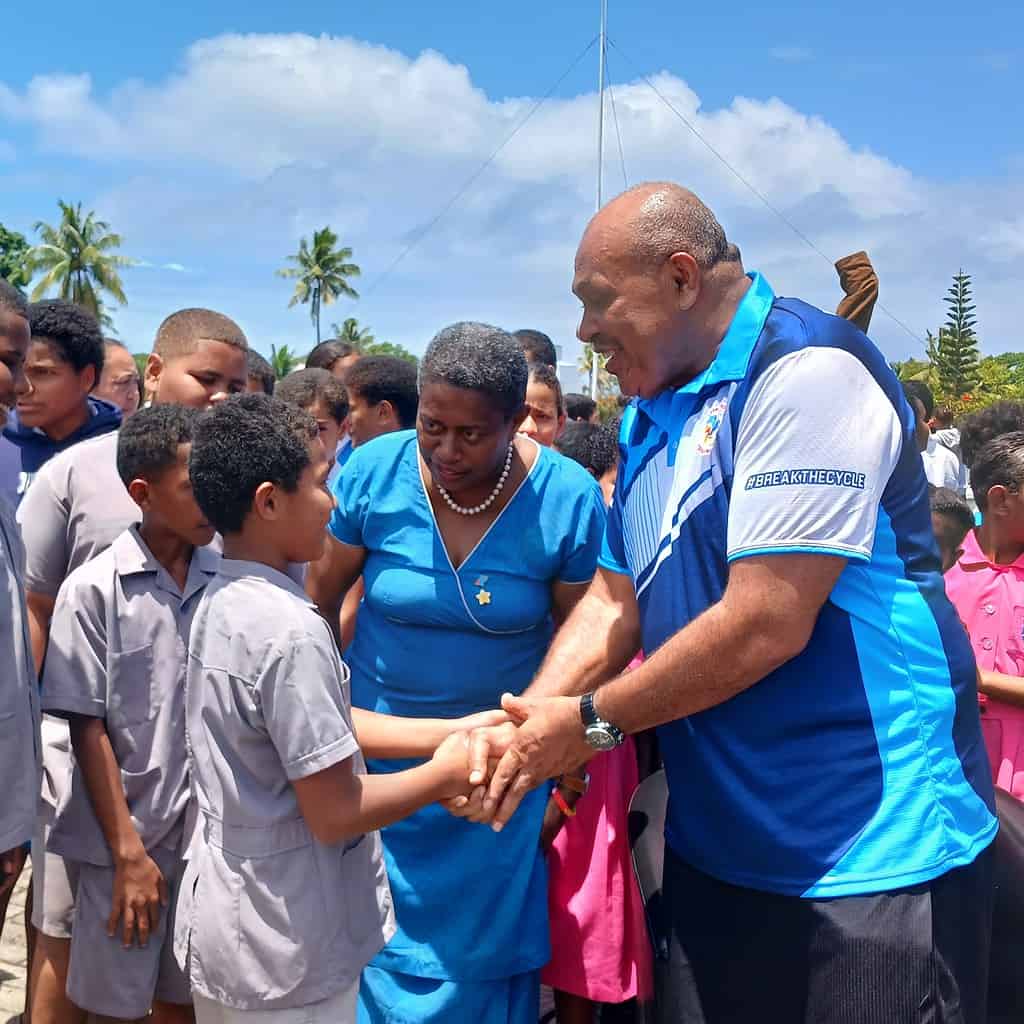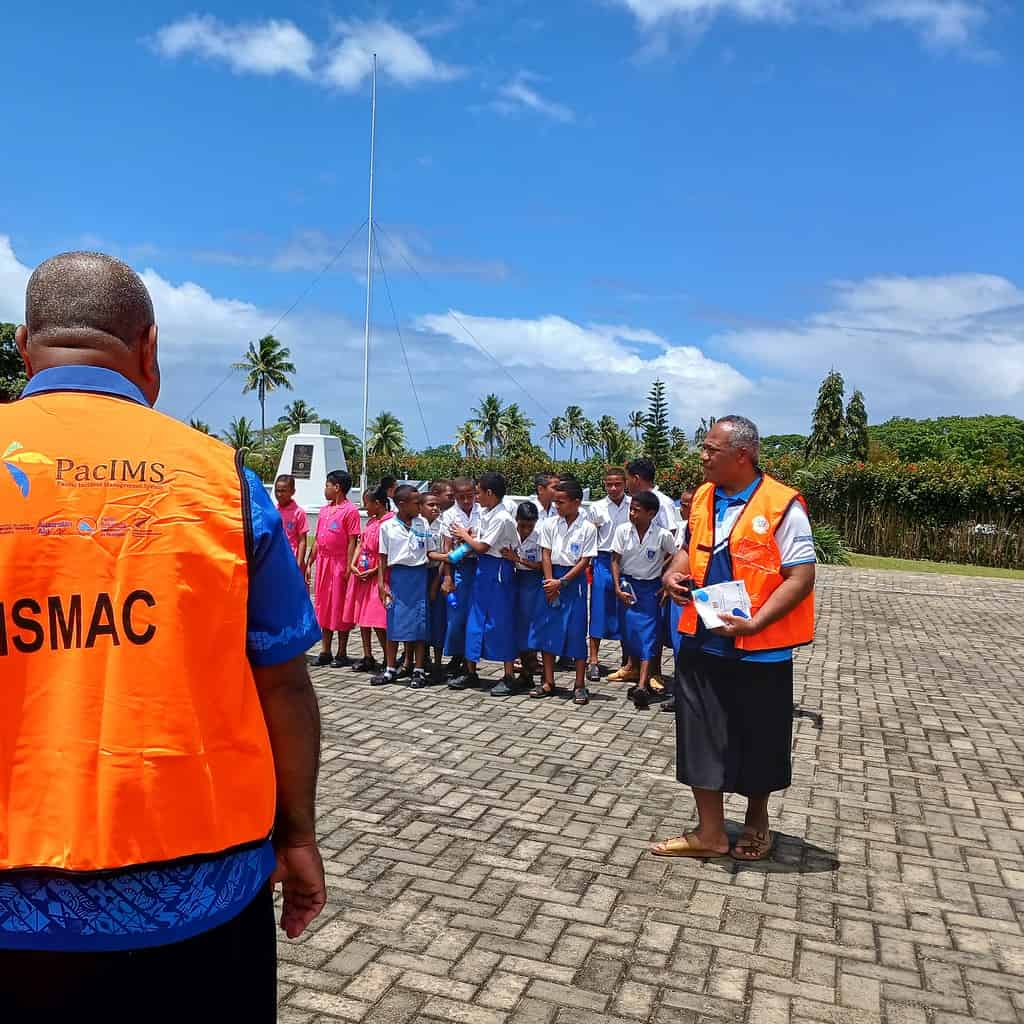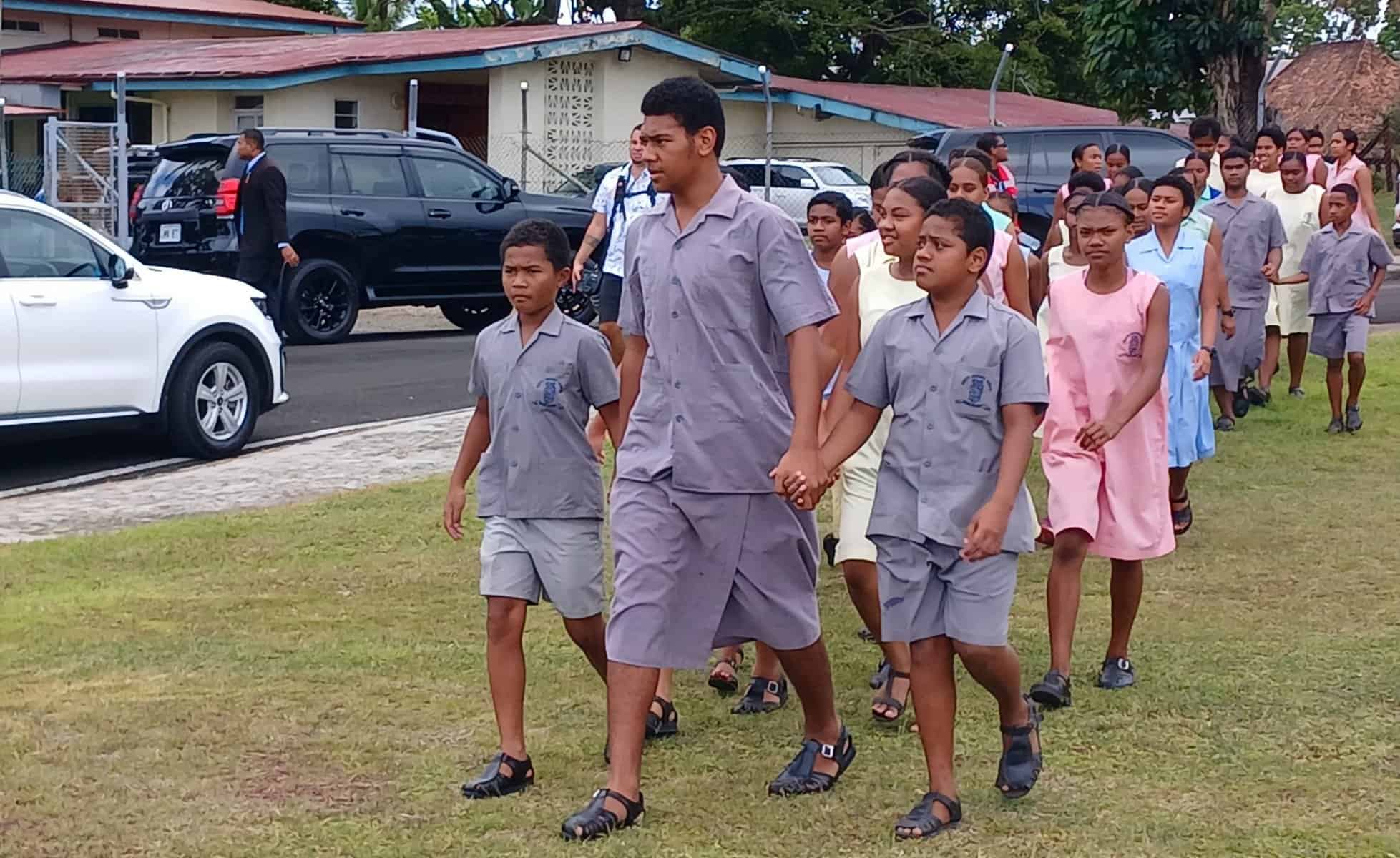Siren sounds blared across the Suva harbour today which prompted civilians of all ages to head to higher ground.
Students and teachers from six nearby schools held hands and swiftly made their way to one of the evacuation areas—the National War Memorial in Nasese.
“Do you know what the sound of the siren meant? Was it loud?”, NDMO Director, Vasiti Soko, addressed the crowd. A mixture of responses came from students as some said yes, while others said otherwise.
“There’s three types of sirens. One of them is a warning siren and once that’s sounded, it means there’s a warning in place for the whole of Fiji. It also means your teachers will activate your tsunami response plan,” said Soko.
Thirteen tsunami sirens installed between the Suva–Lami corridor were activated during today’s live tsunami drill with a selected number of participating schools and agencies. The initiative is part of a simulation exercise conducted by the National Disaster Management Office (NDMO), and is an important component of NDMO’s 2023 National Disaster Awareness Week.
Soko said for the sirens to be activated, it will require a lot of scientific analysis behind it.


“If there’s a volcano in Tonga, it does not mean that we will activate a siren just for that reason. [In the event that it does happen], the teams from the Ministry of Lands and Mineral Resources and NDMO, together with key partners, will start analysing the impact of that particular volcano… If there’s a real threat to Fiji, only then will you hear the siren,” Soko clarified.
“When the siren is activated in real time, there’s no time to play around. You need to run for your life… to the highest point to be safe,” she stressed.
The last known tsunami to hit Fiji’s shores was at the Suva Port during the early 1950s.
Occupational Health and Safety Coordinator at Draiba Primary School, Inoke Marawai, said the school has standard operations necessary for cyclones and other disasters. “We have to do drills once every term,” he said. “One on tsunami, one on fire, one on earthquakes, as well as road drills. The students [at Draiba Primary School] are well versed on it.”
The Year 6 teacher said the usual safe zone for the students is at Raghwan Park, beside the Pacific Islands Forum Secretariat. “Not this place [National War Memorial], this is just for formalities,” he said.
Special Representative of the United Nations Secretary General for Disaster Risk Reduction and the Head of the UNDRR, Mami Mizutori, who is in the country for a diplomatic visit, affirmed: “It is very important that we are prepared for [potential] tsunamis. [The tsunami drill] is not only about tsunamis, it will prepare us for many other hazards that are around us, and it was important that the children joined and learnt how to take care of the younger and vulnerable children during a time of crisis.”
At the recent Pacific Ocean Science Conference in Nadi, a scientist with the Pacific Community pointed out that coastal inundation (or big waves that cause flooding) is currently a “big threat” for Pacific island countries and unfortunately, not all PICs have early warning systems.
“Over the last six-seven years, we were able to develop tailored forecast systems for seven countries for coastal inundation. Fiji, for example, has an early warning system for the Coral Coast, and it obviously does not cater the need for the whole nation yet,” said SPC’s Herve Damlamian.
Today, Fiji’s Minister for Rural and Maritime Development and Disaster Management, Sakiasi Ditoka, reiterated: “At the moment, our early warning siren is currently up to Lami. The intention is to have it… in Rakiraki… and right around Viti Levu, Vanua Levu and the outer islands as well.”
He told Islands Business: “For the time being what we’re resorting to is broadcast by radio and also mobile phone messages. We’re taking it a step at a time by working with our international partners such as the UNDRR on how we can organise that. [The early warning system] is a work in progress.”
The Head of UNDRR added: “The UN Secretary General has a global initiative called the Early Warnings For All (EWFA) initiative. [There are] 30 countries that will be targeted for this initiative, of which five are from the Pacific region, including Fiji.”
“We are working so that the whole region will be protected with effective early warning systems which will lead to early action,” she said.
